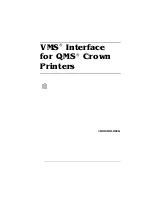
VMware, Inc.
9
Chapter 1 About the vCloud SDK for Java
vCloud Catalogs
Catalogs
contain
references
to
virtual
systems
and
media
images.
A
catalog
can
be
shared
to
make
it
visible
to
other
members
of
an
organization,
and
can
be
published
to
make
it
visible
to
other
organizations.
A
vCloud
system
administrator
specifies
which
organizations
can
publish
catalogs,
and
an
organization
administrator
controls
access
to
catalogs
by
organization
members.
vCloud Tasks
Long
‐
running
operations
initiated
by
members
of
an
organization
create
tasks,
which
are
kept
on
the
organization’s
tasks
list.
Virtual Systems and Media Images in a vCloud
Virtual
systems
and
media
images
are
stored
in
a
vDC
and
can
be
included
in
a
catalog.
Media
images
are
stored
in
their
native
representation
(ISO
or
floppy).
Virtual
systems
are
stored
as
templates,
using
an
open
standard
format
(OVF
1.0).
These
templates
can
be
retrieved
from
catalogs
and
transformed
into
virtual
systems,
called
vApps,
through
a
process
called
instantiation,
which
binds
a
template’s
abstract
resource
requirements
to
resources
available
in
a
vDC.
A
vApp
contains
one
or
more
individual
virtual
machines
(
Vm
elements),
along
with
parameters
that
define
operational
details
such
as:
How
the
contained
virtual
machines
are
connected
to
each
other
and
to
external
networks.
The
order
in
which
individual
virtual
machines
are
powered
on
or
off.
End
‐
user
license
agreement
terms
for
each
virtual
machine.
Deployment
lease
terms
(typically
inherited
from
the
containing
organization)
that
constrain
the
vApp’s
consumption
of
vDC
resources
Access
control
information
specifying
which
users
and
groups
can
perform
operations
such
as
deploy,
power
on,
modify,
and
suspend
on
the
vApp
and
the
virtual
machines
it
contains.








































